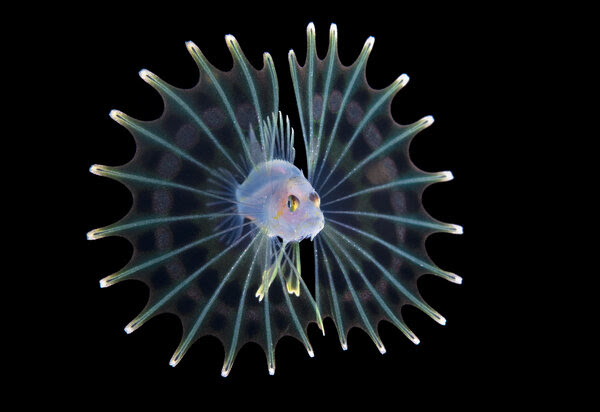Simulation of Aquaculture Production
ZOO-TECH
Zoo-Tech is an introductory spread sheets applications applied to marine aquaculture production. It provides important, easy to understand calculations with user controlled information.
There are three sections in Zoo-Technical, Control and Calculations.
The simulation is based upon a site’s Thermal Profile, (mean weekly temperature), a general Daily Growth Model, and a Daily Feeding Table plus other information and models.
Control
The user can vary simulation (production) parameters which are grouped into 7 categories :
- Period – Beginning, ending date
- Stock – Number, mean weight, individual price
- Mortality – Percentage and number
- Daily Growth Model – Ranges, factors, default values
- Environment – Consumption of O2, production NH3 + NH4, …
- Cage – Size, length,
- Food Characteristics – Granulo, price,
Calculations
In this example calculations are intermixed with their controls. This is done in order to better demonstrate “cause and effect” and hyerartical control. In SIM and SAP controls are centralized and seperated from calculations.
SIMulation & Real Data
SIMulation & Real Data
Sim_real Simulation integrating real weekly production data with simulated results
Documentation is at Here
Zoo-Tech is an introductory spread sheet applications applied to marine aquaculture production. It provides important, easy to understand calculations with user controlled information.
The simulation uses 5 sheets is and is based upon a site’s
- Thermal Profile, (mean weekly temperature in C°, by week, by year.),
- Daily Growth Model which is a : general growth model for Sea Bass (D. labrax) weighing between 1 and 500 grams and a temperature between 14.5 and 26 °C. The Model, is obtained from Leclercq & Tanguy, calculates the weekly weight gain but by changing parameters it is possible to simulate other species growth function.
- Daily Feeding Table (the mean fish weight (row), the temperature (column) and the (manufacture’s), suggested daily percentage (intersection) of food based upon the Biomass (number of individuals times their weight). This calculates into Kilos of food to distribute which calculates cost s and sales considerations.
- Plus other information and models for example which calculate food to nitrate production, ammonium and organic nitrogen production rate, particulate matter production, oxygen consumption and even the mean weekly current speed (minimum in meters/hour).
The user can vary most simulation parameters
SIM_REAL Combines REAL weekly production data, (i.e. number of fish moved (in/out), mortality, mean weight and kilos of food distributed) with user controlled initial data (i.e. starting date, number initial, etc.) the user can quickly summarize production for short-term results based upon real and current trends.
In many simulations, each week’s calculated results are based upon the previous weeks result’s. This can cause the simulated results to “drift” each week from the actual production data. After several months the simulated results could vary greatly from real production data.
SAP
SAP(Simulation of Aquaculture Production)
Simulation of Aquaculture Production is designed for long term (5 years) planning and is a very large application containing 11 large sub-tables. These are :
- Business Control (credit, subvention, taxes, etc..)
- Geo-physical (Thermal Profile, Daily Growth Model, etc.)
- Zoo-technical (conversion index, growth rate, etc..)
- Details of Production / Environment (food, biomass, etc.)
- Fixed Cost (gas, electricity, training, etc..)
- Variable Expenses (medicines, disinfectants, etc..)
- Salaries (Employees, social charges, etc..)
- Investments / Amortization (equipment & material)
- Assets / Liabilities
- Results and
- Macro Commands
The application optimizes the zoo-technical calculations in order to reduce the size and execution time of the spread sheet. Since economical results are calculated on a quarterly basis only quarterly zoo-technical data (food costs, sales, etc.) is required. The problem is how to initiate a series of calculations, then select, recover and store the results from one of the lines which is among all the other rows.
An Execution Macro Command (EMC), \X, was developed to reduce the size and execution time for a simulation. The execution macro limits execution to the lots and quarters specified and controls how the data is processed and stored in the detailed production area. The technical details of this macro command are described in the Macro section.
Background
IFREMER (French oceanographical research institute), I contracted my consultant services to assist IFREMER in developing an Aquaculture Production and Simulation tool. The tool employed 3-dimensional tables, biological models, financial, investments, salaries, fixed / variable costs and user entered data to predict environmental and business results for 5 years.
This project entailed organizing and leading many meetings, some with 25 participants, in order to establish comprehension, group consensus and clear communication. The final simulation tools were spreadsheets, which I presented at several international conferences, and when they were made available to a large public, via Internet, they became a major educational tool in several USA high schools and college aquaculture courses and were used and adapted by professionals in at several countries such as Chili and Greece.
